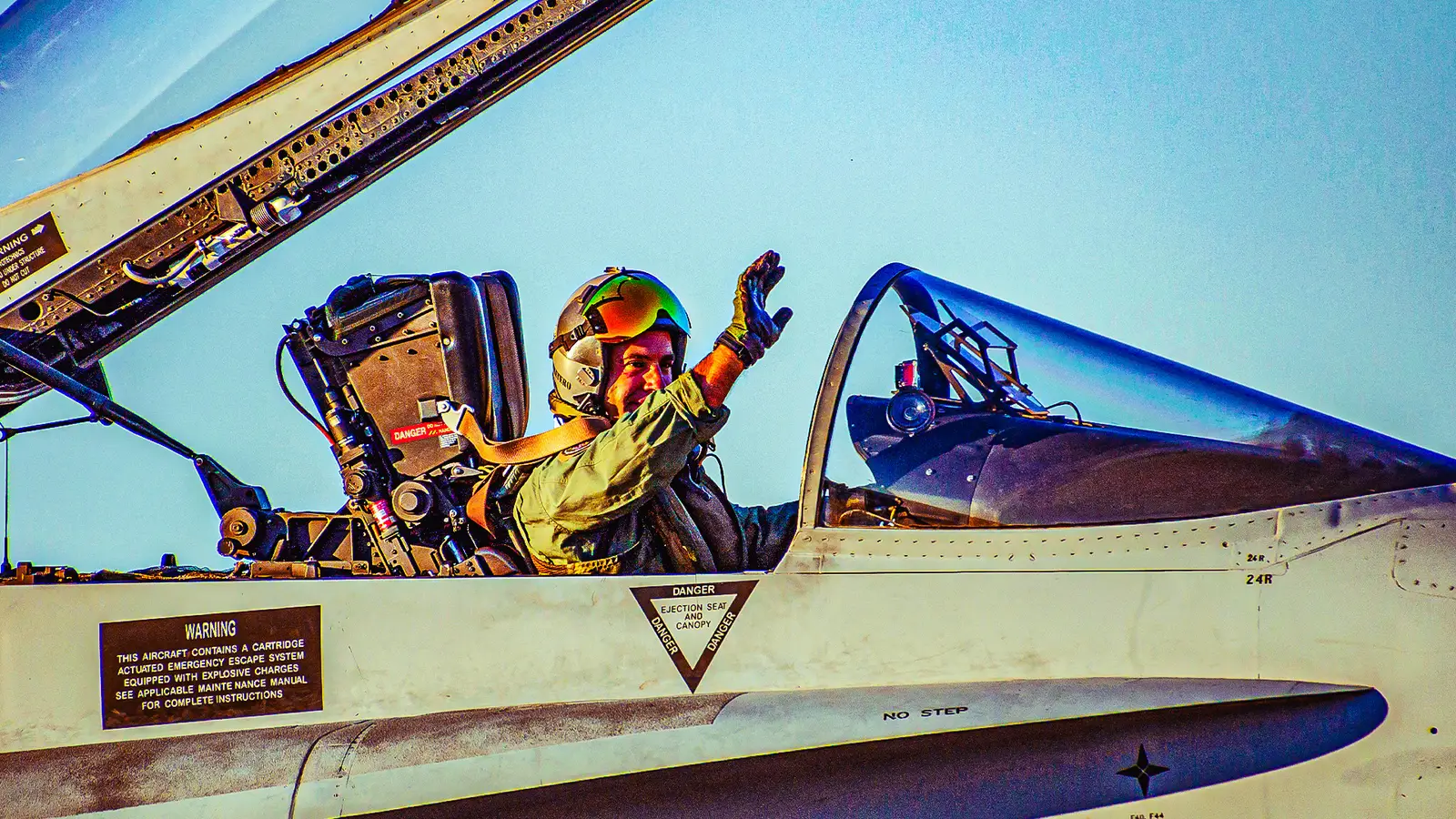Copyright Simple Flying

Air power remains one of the defining pillars of national defense, and in 2025, the size and capability of a nation’s air force continue to reflect its global influence, readiness, and strategic ambition. While technological sophistication, from stealth aircraft to unmanned systems, often takes center stage, the number of active personnel still matters. Behind every jet or drone lies a vast network of pilots, engineers, logistics experts, and support crews. The scale of that human infrastructure determines how effectively a country can operate, maintain, and deploy its fleets across multiple theaters. This guide examines the world’s largest air forces by active personnel, revealing the human backbone of modern aerial power. Drawing on recent data from the International Institute for Strategic Studies (IISS) Military Balance 2025, we’ll compare the numbers, explore what drives each nation’s workforce structure, and analyze how personnel figures connect to modernization, alliances, and strategic goals. By the end, you’ll see not only which nations field the most air force personnel, but also why those numbers matter, from China’s vast logistics network to the US Air Force’s global specialization, and from India’s two-front readiness to emerging regional powers investing in people as much as technology. The Scale Of Global Air Power In 2025 In 2025, more than 3.2 million personnel serve actively in the world’s air forces, according to data compiled from the International Institute for Strategic Studies (IISS) Military Balance 2025. Yet that global figure hides a striking imbalance: most of these men and women belong to just a handful of countries whose air arms combine large fleets, advanced infrastructure, and global reach. At the top of the list, the People’s Liberation Army Air Force (PLAAF) of China and the United States Air Force (USAF) dominate by any measure. Together, they account for over one-third of all active air force personnel worldwide, reflecting their parallel missions: China’s regional control and deterrence around East Asia, and America’s global expeditionary presence supported by hundreds of bases. Both maintain intricate maintenance, logistics, and training ecosystems to sustain operations ranging from strategic bombers to stealth fighters and unmanned systems. Beyond these two giants, other major powers, including India, Russia, and North Korea, also have large air force personnel numbers, though their doctrines differ significantly. India’s personnel numbers reflect the demands of operating on two active borders, while Russia’s mix of conscripted and professional staff supports a broad but resource-stretched structure. North Korea, meanwhile, relies heavily on personnel for maintenance and air defense, compensating for its aging equipment. Together, these examples underscore that size alone does not equate to capability: efficiency, training, and technology increasingly define the true measure of modern air power. China: The World’s Largest Air Force By Personnel China’s People’s Liberation Army Air Force (PLAAF) remains the world’s largest air arm by active personnel, fielding an estimated 390,000 service members in 2025, according to IISS’s Military Balance 2025. Over the past decade, Beijing has transformed the PLAAF from a largely regional defensive force into a modern, networked air arm capable of operating advanced multirole fighters, long-range bombers, and heavy transport aircraft across multiple theaters. This scale is driven by China’s vast geographic and operational breadth. The country’s air power is divided into five Theater Commands stretching from the Tibetan Plateau to the South China Sea, each requiring personnel for air defense, base operations, maintenance, logistics, and training. Beyond its core aviation units, the PLAAF also oversees numerous surface-to-air missile brigades and UAV divisions, which further expand its workforce footprint. Source: International Institute for Strategic Studies (IISS) — The Military Balance 2025 China’s personnel structure has evolved alongside its fleet modernization. The introduction of advanced types such as the Chengdu J-20 stealth fighter, Shenyang J-16 multirole aircraft, and Xian Y-20 heavy transport has pushed the PLAAF to recruit more STEM-qualified officers and civilian specialists to maintain and operate increasingly complex systems. The PLAAF now integrates cyber and electronic warfare units directly into air operations, a reflection of its ambition to become a “strategic air force” capable of both regional dominance and global power projection. As China continues to expand its global reach, including operations at overseas facilities such as Djibouti and potential access points across the Indian Ocean, its personnel structure is expected to evolve toward specialization and joint operations with the PLA Navy and Rocket Force. The PLAAF’s growing emphasis on pilot training, technical education, and unmanned systems shows that its strategy is as much about human capital as hardware. The United States: Global Reach, High Technology The United States Air Force (USAF) maintains approximately 320,000 active personnel, making it the world’s second-largest by workforce but arguably the most powerful by operational and technological measures. The USAF’s mission spans continents, maintaining global presence and readiness across more than 750 bases and facilities worldwide, from Europe and the Middle East to the Indo-Pacific. Much of the USAF’s workforce supports some of the world’s most advanced and complex systems. Its active fleet includes fifth-generation stealth fighters such as the F-22 Raptor and F-35 Lightning II, alongside heavy bombers like the Boeing B-52H Stratofortress and the Northrop Grumman B-2 Spirit. In 2025, the Northrop Grumman B-21 Raider began entering service, ushering in a new era of stealth and long-range precision strike capability. Supporting these assets requires not only pilots and crew, but also vast teams of engineers, cyber specialists, and intelligence analysts, underscoring how the USAF’s strength is built on both technology and expertise. The US Air Force also benefits from organizational depth. Together with the Air National Guard and US Space Force, the broader US air and space enterprise employs more than 410,000 active and reserve personnel. These branches coordinate closely through Air Combat Command, Air Mobility Command, and Air Education and Training Command, forming an integrated network that supports global logistics, intelligence, surveillance, and reconnaissance missions. The USAF’s training pipeline, anchored by institutions like Air University at Maxwell AFB, ensures consistent professional standards across maintenance, intelligence, and flight operations. As a result, the United States combines moderate personnel numbers with exceptional productivity and readiness, a hallmark of its advanced defense ecosystem. India And Russia: Regional Powerhouses With Different Models Among the world’s top five air forces, India and Russia stand out for their size and history, but their approaches to air power have diverged dramatically by 2025. Both nations field large air arms and maintain formidable fleets, yet their personnel structures, modernization goals, and strategic outlooks reflect two very different defense realities. The Indian Air Force (IAF) employs roughly 170,000 active personnel, making it the third-largest air force globally. The IAF’s size stems from India’s unique security posture: it must maintain constant readiness along two contested borders, with Pakistan to the west and China to the north. This dual-front demand requires a broad workforce base to operate and protect over 60 active airbases across the country. India’s fleet is among the most diverse in the world, featuring the Sukhoi Su-30MKI Flanker, Dassault Rafale, and the domestically developed HAL Tejas. Sustaining this fleet demands a deep technical workforce, complemented by an expanding cadre of engineers and AI specialists as India invests in next-generation aircraft development through the Advanced Medium Combat Aircraft (AMCA) program. By contrast, Russia’s Aerospace Forces (VKS) employ about 105,000 active personnel, a figure that has declined modestly over the past five years for three main causes: Recruitment and training bottlenecks: Russia has faced lower enlistment and retention in aircrew and ground-specialist roles, producing a smaller flow of trained personnel into the VKS. Contributing factors include demographic pressures and the lengthy, resource-intensive training pipelines required for modern fixed- and rotary-wing platforms. Reorganization within the Russian armed forces: Ongoing structural reforms and force-management decisions have moved personnel between services, merged or disbanded units, and created new specialist formations. These administrative changes can reduce the headcount reported under the VKS even as capabilities are reshaped, with some personnel reassigned to joint commands, training establishments, or newly prioritized mission sets. Combat and operational losses during ongoing air operations in Ukraine: Sustained operational activity has generated attrition among pilots, maintainers, and support personnel through casualties, medical discharges, and accelerated retirements. Equipment losses, the need for unit rotations, and periods of recovery or retraining for surviving personnel have all contributed to a temporary depletion of active-duty billets while forces rebalance and replace losses. The result has been a growing reliance on contract staff and private-sector maintenance firms, especially for logistics and repair tasks once performed by military personnel. While still among the world’s most capable, the VKS has shifted toward a leaner but more specialized structure, focusing on maintaining advanced aircraft like the Su-35 Super Flanker , Sukhoi Su-57, and MiG-31. However, ongoing operational pressures, particularly sustained air operations in Ukraine and Syria, have strained both logistical and human resources. While India focuses on workforce scale and diversification to ensure operational flexibility, Russia’s approach emphasizes technological superiority with fewer, highly trained specialists. However, both models face long-term challenges. For India, integrating such a wide range of aircraft types complicates maintenance and supply chains; for Russia, shrinking recruitment pipelines could undermine fleet readiness as older technicians retire. Emerging Air Powers: North Korea, Egypt, And Pakistan Three other nations, North Korea, Egypt, and Pakistan , round out the world’s top-tier air forces by personnel strength. Their inclusion underscores how manpower-heavy air force structures continue to serve specific strategic, political, and regional objectives, even in an era of rapid technological advancement. North Korea’s Air and Anti-Air Force, with an estimated 110,000 personnel, embodies a doctrine focused on territorial defense, constant readiness, and deterrence rather than cutting-edge aviation technology. The force relies heavily on aging Soviet-era aircraft such as the MiG-21 and Su-25, yet its extensive human infrastructure supports round-the-clock air surveillance, maintenance, and logistics, critical for a nation with limited access to modern systems. Egypt , with approximately 70,000 active air personnel, commands the largest air force in Africa and the Arab world. Its modernization drive has accelerated through US, French, and Russian partnerships, integrating platforms like the F-16 Fighting Falcon, Dassault Rafale , and MiG-29M/M2. This mix reflects Cairo’s multi-alignment strategy, ensuring operational diversity and political balance between global defense suppliers. Meanwhile, the Pakistan Air Force (PAF), about 65,000 strong, represents a hybrid model of modernization and self-reliance. Combining Western and Chinese systems, notably the co-developed JF-17 Thunder, the PAF prioritizes cost efficiency, rapid adaptability, and interoperability. It also plays a central role in Pakistan’s strategic deterrence posture, including integration with the country’s broader defense ecosystem. Together, these air forces illustrate that size and structure are as much about strategic necessity and national identity as they are about technological capability. In regions where deterrence, prestige, and employment stability remain vital, personnel remains a critical asset alongside modernization. The Future Of Air Force Personnel: Automation And Efficiency While human resources still define scale, automation is reshaping what “large” means for air forces in the 2030s. Increasing reliance on AI-assisted maintenance, autonomous drones, and digitized training is already reducing the need for traditional ground staff. The US Air Force is pioneering predictive maintenance and drone swarming technologies, while China is expanding its use of civilian-military integration, drawing on tech industries for AI support. Even smaller forces like Japan’s Air Self-Defense Force and South Korea’s ROKAF are experimenting with simulation-based training, allowing fewer pilots to log more flight time virtually. The overall trend suggests that while large personnel counts will persist in countries like China and India, the world’s air forces are shifting toward smaller, smarter, and more specialized personnel. The decade from 2025 to 2035may well mark the turning point when technological efficiency begins to rival sheer human power as the true measure of air power.



